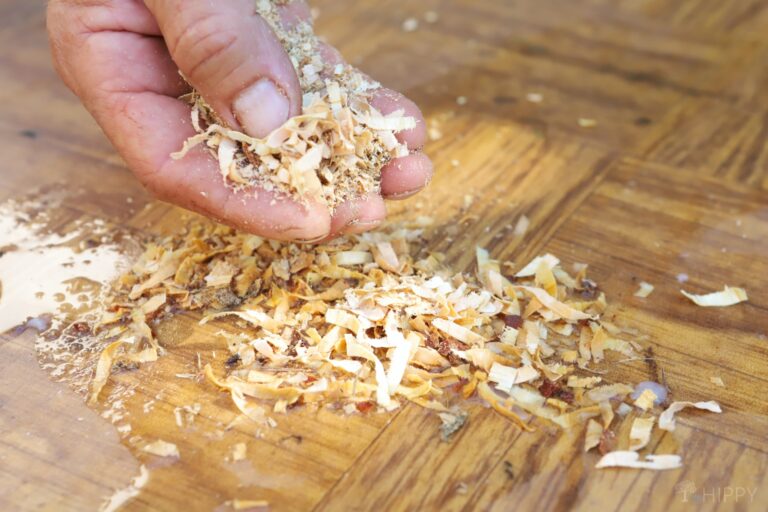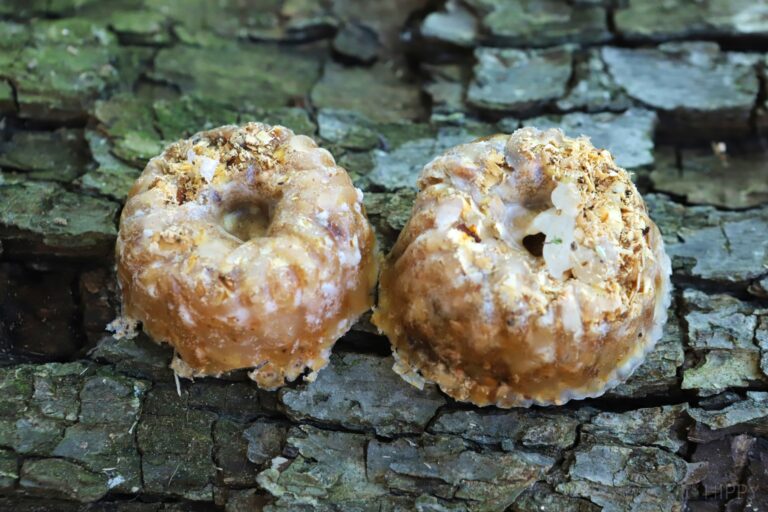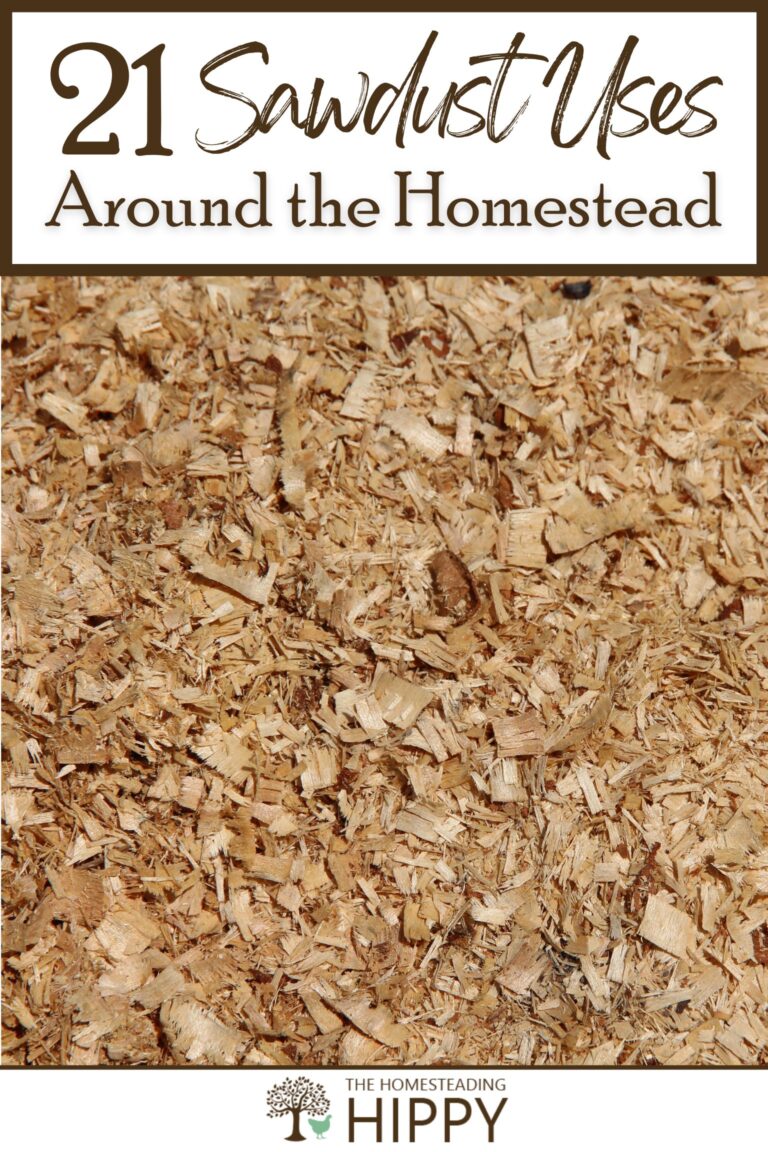Around the homestead, we use sawdust for many purposes, both inside and outside. As we do not have a sawmill on the property, we have had to find woodworking places looking for people to take their sawdust off their hands.

It is in demand, so we can only get a bag or two at a time because many people have caught on to the multiple uses for sawdust.
What can you use sawdust for anyway?
You can use sawdust to improve the soil, for composting, plant health, and weed control, in the garage, workshop, and root cellar, for crafts, driveways, and pathways, and even kitty litter.
Before we start on the list of things it can be used for around the home and homestead, let’s be clear about the difference between sawdust and wood shavings.
In most cases, sawdust is finer and is not always recommended for animal bedding, whereas wood shavings, being coarser, are acceptable.
1. Sawdust for Animal Bedding
Sawdust can absorb a large amount of urine and dry out droppings. Many people use a mixture of sawdust and wood shavings for chicken coop bedding or other homestead animals, but there are different opinions.
We suggest you research the pros and cons before adding sawdust to bedding, whether it is for barn animals or animals kept in hutches, like guinea pigs.
2. Balancing the Carbon-to-Nitrogen Ratio in Soil
The carbon-to-nitrogen ratio in the soil should be around 24:1, although people into permaculture reckon a 30:1 ratio is still acceptable.
Sawdust is high in carbon at 500:1, which breaks down slowly, providing a good cover for your soil while the micro-organisms work below.
Too much carbon and your soil micro-organisms will find the excess nitrogen they need by depleting it from the soil below, robbing your plants of nitrogen.
On the other hand, something like aged cattle manure with its 20:1 ratio will leave the micro-organisms very satisfied.
When building soil for a raised garden bed, you need to mix in some sawdust with your chicken litter, aged cattle or horse manure and other materials used to provide a balance.
3. Creating Good Compost
When growing vegetables, you need plenty of good compost. With its high carbon ratio, adding sawdust will balance out the nitrogen content of vegetable peelings and green cuttings added to the composting bin.
Sawdust will absorb rainwater and the juices from decomposing green stuff, thus accelerating the composting process.
4. Feeding Strawberries
Unlike some plants, strawberries will benefit from a layer of sawdust around their bases, as acid-loving plants benefit from the increased soil acidity. You can reapply once a year to keep the strawberries happy.
If you notice the plants yellowing, it means insufficient nitrogen so add some nitrogen to the sawdust.
5. Breaking Up Clay Soil
Spread on a layer of sawdust 2 to 3 inches deep, then work it into the soil to a depth of around 6 inches.
Do this before the growing season, so the sawdust has a couple of months to break down. Repeat the sawdust application several times yearly to help build the beneficial soil fungi.
To avoid nitrogen depletion, add nitrogen-rich material or a nitrogen supplement simultaneously.
6. Inhibiting Weed Growth
Because it breaks down so slowly, placing sawdust on the soil surface around your plants will inhibit weed growth, giving the plants more chance to outgrow the weeds.
It would be best to be careful, as you don’t want to rob your plants of nitrogen.
You can mix in 2 ounces of nitrogen per gallon of sawdust. If leaves start going yellowish, you know there is a nitrogen deficiency.
7. To Soak Up Mud on Footpaths
Sawdust placed on footpaths that tend to get muddy will absorb the moisture and keep down weeds. It also helps create a non-slip surface.
Be careful that the pathway has a boundary, as you don’t want the sawdust spreading onto your plants.
Remember, the 500:1 carbon-nitrogen ratio of sawdust means plants will be nitrogen deprived unless you add nitrogen-rich material to compensate.
8. Add to Pathways in Winter To Reduce Slipping on Ice
Spreading sawdust on icy paths in winter will help prevent slipping. Many people have become used to using salt or sand to avoid slipping on ice, as it is heavier than sawdust and will not blow away easily.
If you have no salt or sand available, then use sawdust. The benefit is that it will decompose over time and pose no threat to waterways should it wash off in spring.
9. Improve the Yield From Fruit Trees
Keeping orchards neat and clean by raking up leaves and mowing between rows means we don’t allow the mycorrhizae and mycelium of the fungal layer enough opportunity to improve the soil.
Rectify this by adding a layer of sawdust around your fruit trees. Make sure the sawdust is well wetted to prevent it from blowing away, and extend it out to the tree’s drip line.
You can add some nitrogen if the fruit trees need it. It will also help prevent weed growth while allowing the fungi in the soil to get to work.
10. Mushroom Growing
Mushrooms feed on decomposing trees, so it makes sense to use sawdust and compost as a growing medium. Make sure it is sufficiently moist before adding your mushroom spores.
11. Furniture Repair
Instead of buying those expensive little tubs of wood filler to fill in cracks or small holes in furniture, use the sawdust when you sand down a particular piece.
Mix the sawdust to a firm paste with cold wood glue, and apply it to the blemishes with a putty knife.
It can later be sanded smooth and will be the exact colour of the wood because it is the same wood.
12. Barn or Workshop Floor Cleaning
When concrete floors are not sealed, each time you sweep, it raises small cement dust particles.
To get around the dust problem, create a sweeping compound using sawdust, sand, a little oil and water to spread on the floor.
Allow the sawdust sweeping compound to absorb the dust, then sweep up the lot. You won’t be coughing and choking on the dust.
13. Absorbing Grease
If oil spills, whether cooking oil or oil in the shed, sprinkle sawdust on the spill and wait for it to absorb the oil, then sweep up and discard.
If the floor is somewhat absorbent, like untreated concrete, you may need to reapply the sawdust until the oil is sucked out of the base by the sawdust.
14. Leftover Paint Disposal With Sawdust
Council or municipal bylaws in most places prevent you from throwing away unused paint in a tin into the garbage.
You also cannot pour paint down the drain as its effect on waterways is toxic.
A safe way to get rid of unwanted paint, if you really can’t find a use for it around the homestead, is to pour it onto a pile of sawdust, let it sit in the sun for a few days for the paint to absorb and the whole sticky mess to dry hard. Then it can be disposed of in the garbage.
15. Create Fake Snow for Crafts
If some of the paint you were thinking of disposing of is white, mix it with sawdust and glue to create fake snow for craft projects. A little glitter applied to the fake snow on the crafts will finish them with sparkle.
16. Sawdust for Textured Craft Projects
Any project that requires fake grass or a fake gravel road, a moonscape or anything else that a child can imagine, can be achieved with the appropriate colour paint, glue and sawdust mixed. Texture it appropriately for the right effect.
In the video link below, the artist planned the drawing in light pencil, outlined in a dark marker, and then glue and various colours of sawdust were applied to create texture on the giraffe.
17. Firestarters
Use the old wax in the bottom of candle jars, half-used birthday candles, and even broken wax crayons – paper removed.
Melt the wax on the stove or over an outdoor fire then stir in a handful of sawdust at a time.

When the wax won’t absorb any more sawdust, you can then tip itinto whatever mold you are using, like cupcake pans to create the shapes.
The alternative is to roll the warm wax/sawdust mixture into balls.
An easier way is to put the wax sawdust mixture into the indentations in cardboard egg boxes. Break out an egg section when you need a firelighter.
18. Use as a Filling for Pincushions
Keep your needles and pins sharp by using sawdust as a filling for a pincushion.
A quick no-sew way to create a pincushion is to take a small plastic container and fill it with sawdust.
Next, cut a piece of fabric that will fit over the top and down the sides with space to fold underneath.
Put fabric glue around the outside edge of the container. Place the material over the top, smooth it onto the glue, and wait for this to dry.
When dry, turn it upside down and add glue underneath, then tuck in the fabric edges neatly.
For an even more straightforward method, check out the video link below. It shows a fabric square filled with sawdust, tightened together, and then super glued into an attractive small container. It almost looks like a cupcake.
19. Use As Organic Cat Litter
Use coarse pine sawdust mixed with pine or cedar wood shavings to create absorbent and fresh-smelling cat litter.
Sodium bentonite used in clumping cat litter can get into the gastrointestinal systems of cats – they lick their paws to clean their faces and eyes, thus absorbing some of the sodium bentonite.
Avoid the silica dust in commercial cat litter with this back-to-basics cat litter made from coarse sawdust and shavings.
20. To Avoid Slipping on Oil
Place sawdust on the floor below a vehicle that has an oil leak. The sawdust will absorb the liquid and stop the floor from being slippery. Replace at intervals to keep the floor from becoming stained.
21. Storing Root Crops
If you want your root crops well insulated for the winter, then a cardboard or wooden box will do the trick once you add a couple of inches of sawdust on the bottom, layer on your root crop, and add another ½ inch layer of sawdust on top.
Continue in this way until your box is full, then add sawdust down the sides, so there are no gaps. In the video link below, wood chips are used as an alternative to sawdust.


As a child I wanted to grow up and marry a farmer… simply because it was so different from my life right on the shores of the ocean. Well, I didn’t marry a farmer but a surfer instead. The urge, however, to grow stuff and make great food for a big family never left. We are on acreage with a sea view and easy access to fresh caught crayfish and other seafood – the best of both worlds. As an artist and writer I enjoy creating new recipes, tweaking traditional ones, and sharing the results not only with family and friends, but online. Mee the rest of the team at this page.
